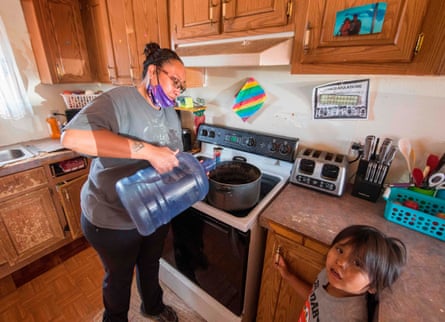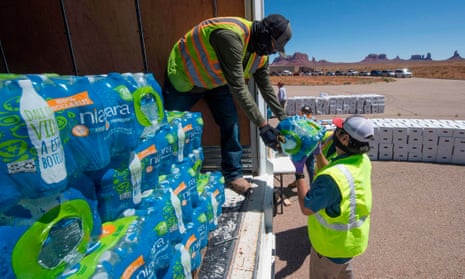The US government’s haphazard approach to providing Indigenous American tribes with clean drinking water and sanitation must be radically transformed to tackle decades of underfunding and neglect, according to a new report.
An estimated one in 10 Indigenous Americans lack access to safe tap water or basic sanitation – without which a host of health conditions including Covid-19, diabetes, and gastrointestinal disease are more likely.
Among the most affected by water issues are 30 tribes within the Colorado River Basin (CRB), located across California, Nevada, Arizona, New Mexico, Utah, and Colorado, according to researchers from the University of Utah and Colorado in the Water and Tribes Initiative.
Reduced rainfall and droughts linked to the climate crisis are further straining supply issues such as inadequate and ageing infrastructure, legacy contaminants, insufficient technical capacity within tribes, and limited revenue streams.
Unlike towns and cities, tribes cannot raise money through property taxes as reservation lands are held in trust by the federal government. But while the root causes vary from tribe to tribe, the overriding issue is the absence of an adequately funded comprehensive government policy to make good on treaty obligations. In exchange for the cession of millions of acres of lands to white settlers, tribes were promised a permanent homeland, a livable reservation, and a home conducive to health and prosperity.
“These promises are broken when we do not have clean water to drink, to cook with, and to wash as required to avoid the spread of this deadly disease,” said leaders of the Navajo Nation, Hopi Tribe, Ute Mountain Ute Tribe and Ten Tribes Partnership and the Fort Yuma Quechan Indian tribe.

They added: “Helping to provide clean water to us, throughout Indian Country, benefits everyone, and its absence correspondingly jeopardizes the health of the entire United States of America.”
In the US, race – not where you live or income level – is the most significant predictor of plumbing poverty, with Indigenous households 19 times more likely than white households to lack indoor pipes for running water and sanitation.
Several CRB tribes suffer from plumbing poverty, including 30% to 40% of all Navajo Nation residents, who are 67 times more likely than other Americans to live without running water. The cost of hauling water is at least 70 times more expensive than piped water. The Navajo Nation has a diabetes crisis because sugary drinks are more readily available and cheaper than potable water.
Indigenous Americans have died from Covid-19, a highly contagious virus which requires good hygiene to curtail the spread, at twice the rate of white Americans, with CRB tribes like the Navajo Nation and White Mountain Apache suffering disproportionately.
Last year’s Cares Act included $5m to support installation of temporary water stations and storage tanks, but tribal leaders were unable to invest the money in urgently needed infrastructure because of an arbitrary time limit on spending. An estimated $4.5bn is needed to address the widespread lack of water access on the Navajo reservation, which is bigger than West Virginia.
Contaminated water is also pervasive in Indian Country, and out west in particular, where mining companies have left groundwater sources with elevated levels of toxic chemicals like arsenic and uranium. An estimated 75% of residents on the Hopi reservation are forced to use drinking water laced with arsenic, which poses serious health risks including cancers and birth defects.
The Trump administration approved $5m towards building a new water system on the Hopi reservation, but that is only 25% of the estimated construction cost and provides nothing towards operation and maintenance of the new pipeline.
Researchers say that the Hopi case exemplifies the limits of the government’s current piecemeal approach: federal grants are too small, require complicated applications to a myriad of agencies and almost never take into account running costs. Tribal consultation – which is key to crafting tailored solutions – is mostly absent.
But this is a pivotal moment, many activists say. They believe Joe Biden’s infrastructure bill, known as the American Jobs Plan, is an opportunity to remove bureaucratic barriers and right decades of wrongs denying Indigenous Americans access to safe tap water and sanitation.
